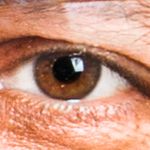 Adobe Community
Adobe Community
- Home
- Stock Contributors
- Discussions
- Re: Technical reasons for rejection
- Re: Technical reasons for rejection
Technical reasons for rejection
Copy link to clipboard
Copied
Greetings to all. I realize that most likely there is a lot of noise in the photo and it is very dark. In the place of shooting there was generally pitch darkness, even autofocus did not work. Does it make sense to try to improve the photo, or are the flaws too big? Perhaps there are other reasons for the rejection, I will be glad to advice.
Copy link to clipboard
Copied
What ISO, and other exposure values were you using. Of course you used a tripod and a cable to elimintae camera shake. You should be able to get a pleassant, acceptable shot with that amount of light. But I think I would be tempted to take two exxposures - one metered for the light bulb and the other (longer exposure) for the rest of the image. Then I would composit the two. If you try to do it in a single shot, the lightbulb will be blown out and that will negatively dominate the whole image. I think this is a situation where you do lots of expermentation until you figure out a way to get what you had in mind when you visualized the image. Fore sure - it is a challenging image; but I think it can be achieved.
Copy link to clipboard
Copied
Thanks for the answer. ISO 400, aperture 7.1, shutter speed - 30 s. Of course filmed with a tripod.
Copy link to clipboard
Copied
ISO 400 and an aperture of 7.1 - you have lots of leaway for increasing ISO or decreasing aperature without noise being a problem. Try the two shot approach (or maybe even HDR) and open up the shadows with increased exposure. I think that is the way to go with this shot - try diferent exposure combinations, and I think you will find one that gives you what you are looking for.
Copy link to clipboard
Copied
Thanks for the answer.
Copy link to clipboard
Copied
Night time shots are very challenging to do uneven light conditions. Layer stacking is probably the only way to get good results. Otherwise the artificial lights are too harsh. Also ask yourself "who will buy this and what will they use it for commercially?"
Adobe Stock inventory already has millions of trees, most taken during the daytime when ample sunlight is abundant.
https://stock.adobe.com/Category/trees/
Alt-Web Design & Publishing ~ Web : Print : Graphics : Media
Copy link to clipboard
Copied
Thanks for the answer. Well, because most of the trees were taken during the day, I decided to upload the photo, because the night photos are more unique.
Copy link to clipboard
Copied
Aperture of f/7.1 is not enough for this depth of field. F/11 would be better. When I look at the light flare I think you had f/11. Maybe more is needed. Shutter speed should be set to a minimum for your focal length. The ISO should be set to AUTO.
Post processing can lighten up the shadows and reduce noise. HDR could also be tried.
Copy link to clipboard
Copied
Thanks for the answer.
Copy link to clipboard
Copied
When I look at the light flare I think you had f/11.
By @RALPH_L
- Exif says 7.1
- Never set the ISO to auto, why should you do that? We aren't in a moving scenario, where you need to control manually aperture and time. That's the only time you set ISO to auto. ISO should be set to 100 for best result.
- HDR will add noise.
- If the Aperture is at 8 and the lens at 35 mm and you are 7m away from the focal point, you will have a DOF of 47m which should be great.
Copy link to clipboard
Copied
The picture is underexposed, as you see, when looking at your histogram. In addition, you should correct the geometry, these crooked columns are not very appealing. I see noise, even that it seems you tried to correct. There are also patches of blur in the leaves. Normally, I would say that is bad noise reduction and fake DOF, but your camera does not do that. I assume that the leaves were moving in the wind during the 30-second exposure. The prominent light with the flares exposes some artefacts and a loss of contrast. Using exposure bracket could have been an advantage here. Furthermore, trying to shield that light partially with your hand or a different device could help.
Copy link to clipboard
Copied
Yes, the noise has been reduced. When I tried to lighten the photo, the noise gets bigger. Perhaps a lot of noise is a consequence of a long exposure and ISO other than the minimum. At ISO 100, the shutter speed was 4-5 minutes, and I decided to increase the ISO. Foliage, yes, could move during long exposure. Probably the photo for the stock is not good.
Copy link to clipboard
Copied
No, like that, it's not good enough for stock. But why not trying to increase the exposure time?
Copy link to clipboard
Copied
Increasing the shutter speed will not lead to an increase in noise due to the heating of the matrix? Another disadvantage of increasing the shutter speed in this case is that, as you correctly noted, the foliage is not completely motionless. The slightest breath of wind and there will be blur. In addition, with a long exposure, there is always a chance that someone can interfere, for example, a person will pass. The filming location is not completely deserted, and even at night a person or the headlights of a car passing in the distance can sometimes pass.
Copy link to clipboard
Copied
*sorry, I want to say not increasing the shutter speed but increasing the exposure time.



